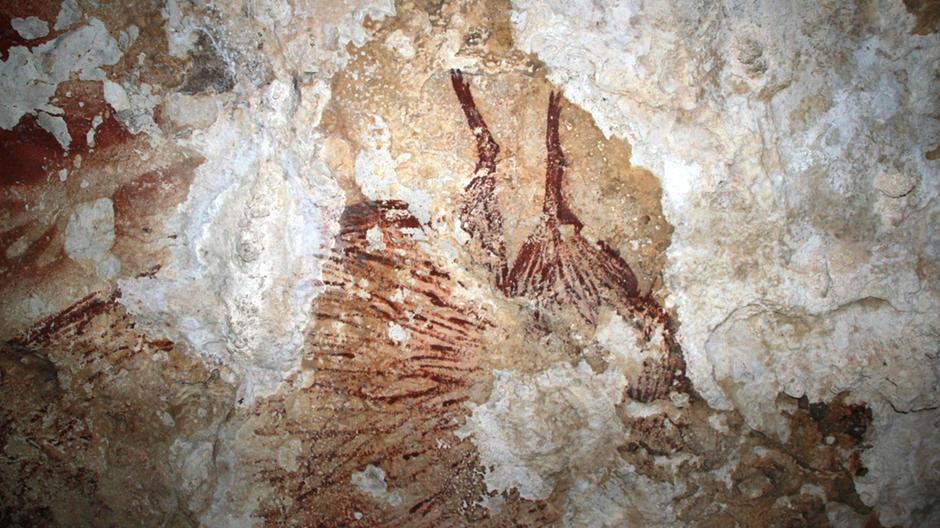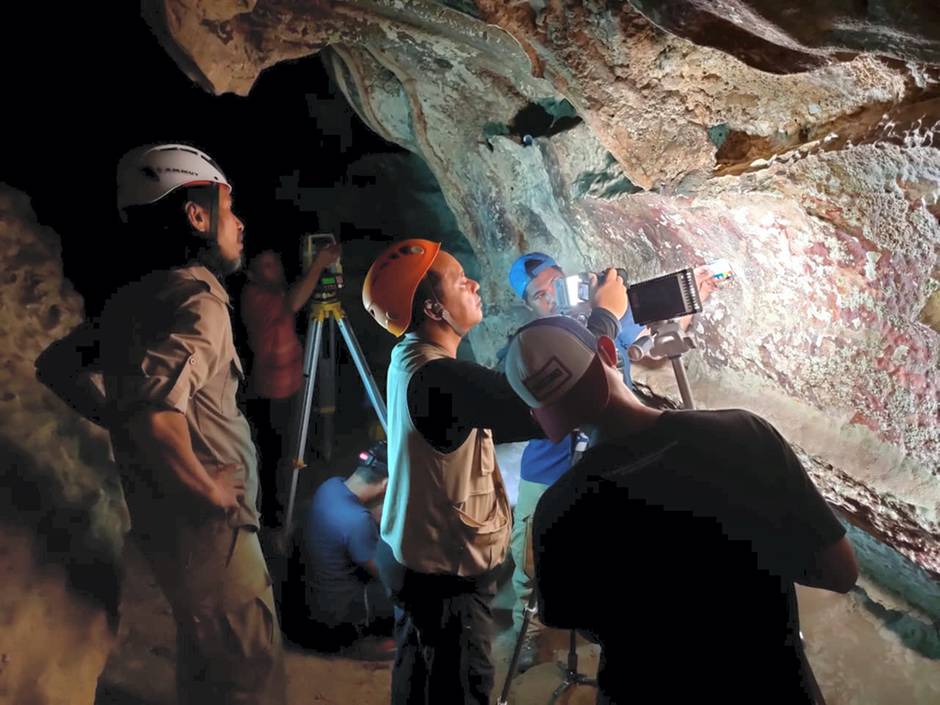Indonesia 15 May. Climate change is accelerating the deterioration of some of the world’s oldest cave paintings that date back about 45,0000 years, researchers found. Analysis of cave art at 11 sites at Maros-Pangkep, in South Sulawesi, Indonesia, indicates that rising global temperatures and severe weather events are creating conditions leading the rock surfaces to break up, a study published in Scientific Reports said. The artwork in the area includes what is believed to be the world’s oldest hand stencil, created by pressing a hand against a cave wall and spraying wet red-mulberry pigments over it. There are also pictures of wild pigs and hunting figures in the area. The study suggests that changes in temperature and humidity from periods of heavy rainfall to drought promote the formation of salt crystals on the surface of the rocks and lead to fragments breaking off.
The increased number of severe weather events caused by man-made climate change are believed to accelerate the process. “The equatorial tropics house some of the earliest rock art yet known, and it is weathering at an alarming rate,” the researchers said. They warned that the continually rising temperatures had “grave implications for the conservation of this globally significant cultural heritage”. Conservation efforts and monitoring are needed to protect the art in the limestone caves that was first discovered by archaeologists in the 1950s, said the paper’s author Jillian Huntley, of Griffith University in Australia.
Before the discoveries in Indonesia, early Europeans were thought to have been the first to paint cave walls about 40,000 years ago. But the paintings in South Sulawesi are thought to be as old or even older. The art effectively tracks the departure of early humans out of Africa about 100,000 years ago and their migrations to Europe and Asia.



Comment here